By Gene Tyndall, Executive VP
Tompkins International
www.tompkinsinc.com
March 2013
Introduction
Innovation and investments move companies forward, and supply chains have the power to create long-term value.
“Many business leaders are quick to ‘blame’ others for inadequate business performance – the government, Wall Street, the global economy, investors, etc. – when in fact it is the obsession with short- term results that is the problem.”
The potential to create business value through the company’s supply chains is becoming better understood. As supply chain management is discussed more frequently in executive suites, questions continue to arise about its contributions to profitable growth – not just for bottom-line operational excellence, but also for top-line revenue growth. Positive examples of the effects on business value are being noticed in almost all industry sectors, as the leaders in supply chain performance almost always outperform their competitors.
While many organizations are beginning to learn about the supply chain value potential, others do not yet recognize it, or certainly do not act upon it. Many business leaders are quick to “blame” others for inadequate business performance – the government, Wall Street, the global economy, investors, etc. – when in fact it is the obsession with short-term results that is the problem.
Thus, this position paper – which was developed in more depth in November 2010 – has been updated and summarized to explain how supply chains specifically impact long-term business value.
In today’s world, admittedly we face uncertainties, volatility, and economic swings. Yet, business leaders frequently overreact to short-term symbols of current events and actions such as the behavior of the stock market, hiring and firing, public vs. private ownership, employee malaise, and even yesterday’s sales figures. No wonder many companies are adrift, fail to innovate, and are largely inactive.
This position echoes recent statements by Clayton Christensen, Harvard Business School professor and one of the world’s top experts on innovation and growth: “…. The short term view of earnings per share is often contrary to the creation of real value that comes about through innovation and growth…..The emphasis on earnings per share diverts resources away from investments whose payoff lies beyond the immediate horizon….”.
This paper addresses the overall value creation framework – of profitable growth, margin improvement, and capital efficiency – and further discusses how supply chain actions and value drivers impact these three major categories of long-term value. Its intent is to help business executives become more aware of the substantial untapped value creation opportunities that exist in their organizations’ supply chains.
1.0 The Supply Chain Value Creation Framework
The importance of supply chains and their effectiveness, or lack thereof, has never been more apparent. Yet the fixation on short-term financial results has limited not only supply chain effectiveness, but also business value.
As Jim Tompkins, supply chain expert and CEO, recently noted, it’s time for leaders to stop managing companies as if they were looking outside to check the weather. “If it’s sunny out, one may feel good about his or her business, and if it’s raining, then they feel down and see a need to reduce their financial view. That’s not really ‘running’ a company,” he said of the current plague of short-term business thinking.
Figure 1 depicts why supply chains are important for long-term success: they drive business value. With profitable growth, margin improvement, and capital efficiency all being impacted, it is clear why today’s CEOs and Boards are paying more attention – actions taken with supply chains create value for any company that buys, makes, or sells a product or service.
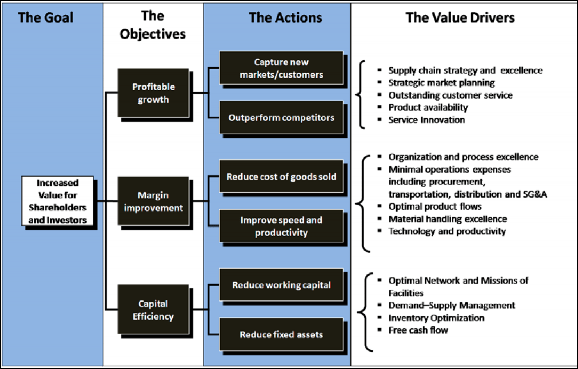
Figure 1: The Supply Chain Value Creation Framework
Moreover, the supply chain Mega Processes, PLAN – BUY- MAKE – MOVE -STORE – SELL – RETURN, shown in Figure 2, comprise the operations of the business. The four flows – Materials/Products, Information, Cash, and Work Flow – determine the effectiveness and efficiency of the operations.
Most companies have traditionally managed these Mega Processes as functional silos, with little information shared across functional boundaries. In today’s global economy, a supply chain is likely to have many interrelated trading partners spanning geographies, time zones, and cultures.
Using the “The Supply Chain Value Framework” is an effective approach for executives who seek true long-term value creation for their companies.
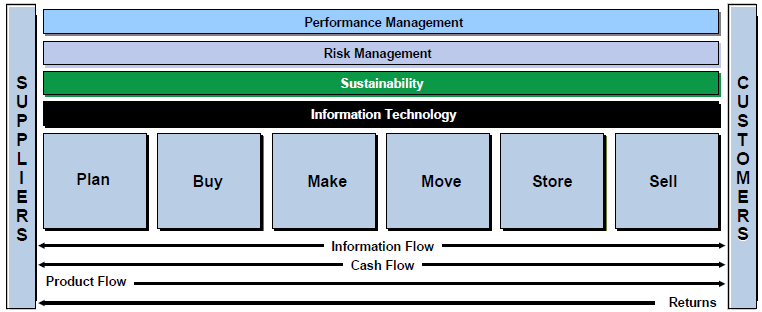
Figure 2: Supply Chain Mega Processes
Value creation is at the core of the Supply Chain Value Framework and, thus, within the Mega Processes.
1.1 Demand-Driven Supply Chains
The “New Demand Driven Supply Chains” (DDSC) are providing smart companies with significant benefits in terms of cost, time, and customer satisfaction (see our other papers and video Presentations on DDSC for further information on this powerful new Operations Strategy and its Processes).
We mention DDSC throughout this updated paper, as it is transforming the performance of supply chains in dramatic new ways that also create long-term value.
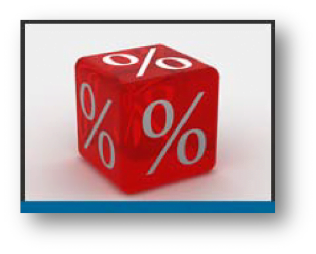
2.0 Profitable Growth
All growth is not profitable. As the Value Framework figure depicts, capturing new markets/customers or outperforming competitors are certainly growth drivers. This section discusses the supply chain actions and value drivers that – when done efficiently and effectively – will contribute to profitable growth, and sometimes even create it.
2.1 Capture New Markets/Customers
Growth strategies are a means to counter stagnation, enhance performance, and increase revenue. The key to finding the right growth strategy is properly matching it to the company and its specific marketplace. Typically, several combinations of strategies are used within a company’s strategic objectives). Potential profitability should be examined before any type of growth strategy is deployed.
The first step in developing a proper growth strategy is to examine all types: diversification, market development, product development and market penetration. The supply chain becomes a key focus in all aspects of growth. Two vital questions for each strategy are: (1) Can the existing supply chains be leveraged, and (2) can they handle the additional capacity the growth strategy promises to deliver?
A second step in the growth planning strategy is to develop a relevant filter process. A filter is typically used to support a business case to prioritize the suggested initiatives, and generally, the filter analysis is conducted in an executive session with appropriate facilitators.
Growth strategies are an important part of a company’s overall business strategy. Careful planning and due diligence will assure that the growth strategy will be successful and contribute to the company’s overall revenue and profitability. The most important planning involves evaluating the type of growth strategies to be considered and then applying a filter. The business plan will identify the addressable market, value proposition, competitive advantage, key factors for success, and entry options to further define the opportunity. Regardless of the type of growth strategy deployed, supply chains will be a key focus for operational efficiencies.
2.2 Outperform Competitors
Top-performing companies often maintain a dual focus: meeting and exceeding profitable growth objectives and outperforming competitors. In order to achieve these goals, it is critical to have a strategic market plan and the supply chain capabilities in place to deliver superior results (surpassing the competition). It is also vital that this strategic market plan addresses both internal and external activities.
The prime attribute of most top-performing companies is the most basic of business strategies: a focus on the market. Top-performing companies regularly develop and revisit a Strategic Market Plan (SMP) to ensure that they understand customers’ needs and wants better than their competitors. In support of an SMP, organizations need to continuously gather information about customers and markets, but this is just the starting point.
One essential component of profitable growth is an integrated Sales and Operations Planning Process (S&OP). This Business Process, when effective for decision-making, is what enables top companies to consistently outperform competitors. Responses to changes in customer needs, wants, or market conditions may include updates to current products, new product introductions, entering new global markets, new distribution channels being opened, outsourcing of non-core activities, and shifting of inventory or components from one region to another, to name a few.
Thus, companies that achieve profitable growth and outperform competitors utilize an SMP process to deliver timelier, more robust, and better business intelligence than the competition. These same companies have proven means of using global supply chain technologies to share information throughout the organization to provide employees with business intelligence in a constant, clear, and succinct manner.
3.0 Margin Improvement
Operating margins represent the difference between operating revenues (sales) and operating costs (expenses). For a company that makes, buys, or sells product, it reflects the total costs of that product. It also reflects the productivity with regard to producing, buying, distributing, and servicing the product. Therefore, the company needs to work on reducing the cost of goods sold (COGS), as well as productivity and speed. In addition, supply chain decisions impact the taxes paid by the organization around the world, which also adds to the costs of operations.
3.1 Reduce Cost of Goods Sold
The total COGS comprises all the operational costs that go into its transformation from BUY through to SELL – in other words, supply chains (Figure 3).

Figure 3. End-to-End Supply Chain Planning
BUY
Many people view buying as purchasing – a necessity of business – and, thus, discount its ability to positively impact margin. However, the procurement (BUY) process has a distinct role in securing products and materials as a critical integrated component of supply chains. It is this integration that makes the procurement a significant cost and value driver.
Procurement has the potential to deliver the best price, the highest quality, and the best availability through the development of an agile supply base.
Until a company pulls all operational components together between the supplier and customer (purchase order acknowledgement, on-time delivery, correct quantity, correct quality, and accurate invoicing) the true cost of the supplier-customer relationship cannot be determined. Suppliers that ship the incorrect quantity or invoices incorrectly cost the company additional resources.
Procurement can serve as the stewards of the supplier-customer relationship, monitoring all interactions and communicating back to the supplier. This level of relationship management can detect both administrative and product quality drifts, and proactively address them – minimizing impacts and additional costs.
The ability of a company’s supply base to quickly respond to changes (e.g., change in demand, shifting of quality requirement, and changes in taxation) can help a company gain margin or minimize cost. Unfortunately, this agility is not an inherent trait of most supply chains and, thus, must be developed to a mature, effective state.
A skilled procurement organization develops the business intelligence that alerts it to early failures, warns of changing demand and signals the magnitude of a potential interrupts. It also performs risk analysis and develops secondary and tertiary supply alternatives. These proactive steps not only minimize time and resources lost during interrupts, they also reduce the cost associated with such events by preplanning and negotiating before the crisis to eliminate price gauging during high-demand, low-supply scenarios. Procurement manages information flow and supply chain risk that helps prevent margin erosion and minimizes impacts of supply chain interrupts.
By establishing the right strategy, designing efficient processes, staffing the right skills, enabling with the right technology and designing an effective organization, procurement can achieve an agile supply base that delivers the best price, best quality, and best availability.
MAKE
The long-term issue today about MAKE is where to produce and/or assemble goods. “Near- shoring” is the term given to the strategy of locating selected production and/or assembly nearer to the company’s markets. This issue is complicated, and involves total costs, taxes, and market incentives, but it is expanding in executive interests due to numerous factors.
Here again, the total end-to-end supply chain view, and customer satisfaction strategy, is what should determine these decisions.
The COGS for the typical manufacturing company ranges from 55% to 95% of total revenue and averages 80%. Even modest changes to the COGS can have a staggering impact on a company’s financial health. Making significant improvements in the COGS should be a high priority for all manufacturing companies. A 1% reduction can translate into a major improvement in gross profit margin.
The typical components of COGS in manufacturing are materials, labor, allocated overhead and tooling and equipment. The most effective way for companies to make improvements in these cost buckets is to either reduce wasted expenses in their manufacturing processes or have a core competency in outsourcing to world-class manufacturers for product supply. Evaluate manufacturing processes to remove or reduce the time required for processing steps that do not add value to the product.
Reducing the waste in manufacturing processes through a focus on overproduction, waiting time, transport, over-processing, excess inventory, unnecessary motions and defective parts using the tools of lean manufacturing, can be the best approach to reducing a company’s COGS.
MOVE
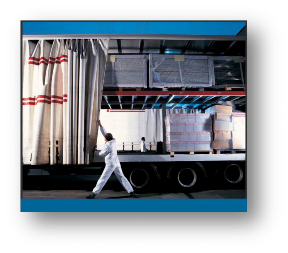
In recent times, the cost to transport raw materials, work in progress inventory, and finished goods to market has increased substantially as a percentage of COGS. Transportation decision makers are faced with many challenges – including customer requirements, mode selection, carrier/fleet capacities, shipment visibility, performance management and much more. Fortunately, transportation planners can apply best practices and technology to develop a well-controlled freight management program.
Taking effective management control of freight spend can substantially reduce COGS and improve profits. Applying these strategies will not only reduce operating costs, but will also improve service and operational control.
STORE
There is an old saying in warehousing that goes, “If there is available space, someone will eventually fill it,” and this usually happens sooner than later. Therefore, it is not uncommon in most supply chains for warehouses and distribution centers to be full, even during slow periods.
Normally, a storage facility will run out of space due to rapid growth, seasonal peaks, large discount buying, planned inventory builds for manufacturing shutdowns, facility consolidation, or even slow sales for the period. For consumer-driven environments in which seasonal planning and purchasing rely heavily on buying forecasts and shifting consumer tastes, the availability of the right merchandise to ship to the customer is vital to success and sales.
Hence, planners desire to have a wide selection of goods, as well as large quantities of “hot” items, to fill customer orders. When it comes to supply chain space planning, everyone is driven by demand and forecast accuracy.
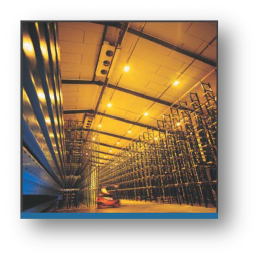
However, when looking at supply chains in general, warehousing is for the storage of materials that are used in manufacturing, packaging and assembly, while distribution centers are for the transformation of bulk products from a multiple source into mixed load shipment. Storage, unto itself, is rarely a key part of the supply chain formula for low- cost distribution, yet it can be a best practice to maximize sales, customer satisfaction, and reduce total delivered costs.
Best-in-class organizations achieve short- and long-term success by designing supply chain storage operations to support specific business requirements, to effectively leverage internal planning, purchasing or sourcing initiatives, and to reduce business risks to acceptable levels.
This is never easy, as the space and labor to effectively manage inventory come at a premium. The application of best practices, operational-specific solutions, and process management strategies will reduce the total COGS and improve margins for all organizations in the supply chain. However, improperly designed and managed storage will simply be full all of the time or, worse, empty because it was not coordinated with improvements in inventory S&OP throughout the organization.
SELL
Companies often underestimate the contribution that operational excellence (i.e., supply chains) makes to growing their customer base. Operational excellence is critical to: sustaining the position of the preferred supplier; creating and entering new markets; and taking market share from the competition. Effective supply chain management has as much to do with revenue growth as it does with margin improvement.

Management is learning that DDSC “pull” supply chains, stimulated solely by customer demand and characterized by customer service-intensive actions, do indeed contribute to revenue growth. Yet they also realize that, unless the company is 100% “make-to-order,” DDSC chains are complex to master and grow open-ended, unless the company is a catalog or Internet-based fulfillment business. Today’s marketplace of high fragmentation, more channels, and rapid product proliferation makes it even more challenging.
Differentiation through service value is the critical success factor. Amazon, for example, has raised the service bar to customer delight through easy ordering and speedy delivery of the right products. Because they continually invest in customer satisfaction through their supply chains and reward innovation, Amazon is creating long-term value.
While many companies are beginning to measure the “Perfect Order,” the recognition that they are far from “perfect” becomes a wake-up call. What is the “Perfect Order”? It is the order that is easy to enter, simple to track, delivered on-time as promised and in good condition, with perfect documentation, and accurate invoicing with easy payment. It also involves proactively notifying the customer of the order status, being responsive and keeping the order secure. Very few companies can report their Perfect Order rates as being in the 90% range.
Perfect Order is one type of service that companies can use to differentiate themselves. Other services are made available by companies trying to achieve superior customer service.
Differentiated customer service is not only profitable, it can also be a true competitive advantage. An example of this is product-service bundling (i.e., channel-specific, product-service combinations developed to differentiate the company through service value).
Creating customer value is the end goal of the supply chain SELL process. By creatively improving the customer’s performance, value is created for both parties. In fact, most supply chain managers do not think strategically about this goal; rather, they measure (and are measured) on discrete benchmarks, such as on-time deliveries or order fill rates.
There are various ways to satisfy ever more demanding customers. The challenge is to find those methods that are profitable to both parties – those that create customer value as well as supplier value. Over-serving all customers (without corresponding value) is of course the wrong strategy, but likewise, so is the separation of sales and marketing from supply chain.
The solution is to develop “service-products,” targeted to the right markets, segments, and customers, so that win-win benefits will accrue to both parties. This is why SELL is a mega process of the supply chain.
RETURN
An average return rate for consumer electronics devices ranges between 11% to 20% in the US and 2% to 9% in Europe. In addition, growing returns from consumers for B2C deliveries are increasing as online ordering becomes more popular. Interestingly, surveys also state that 95% of the returned products have nothing wrong with them.
Product return rates will vary by industry and normally range anywhere from 6% to 20%. Supply chains are advised to handle this process with care, since there is money to be refunded to customers, plus the cost of repackaging, restocking, and reselling the returned items.
Returned products need to be repaired, recycled, donated, or destroyed, depending upon their condition. All these costs add up quickly and negatively impact COGS. Therefore, for retailers, as well as OEMs, addressing returns is one of the key priorities to ensure improved profitability and customer satisfaction.
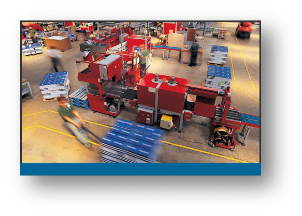
3.2 Improve Speed and Productivity
The other major action to create value in margin improvement is through speed (doing things quicker) and productivity (doing things less costly and more efficiently). These are related, but not necessarily integrated. Yet, the full potential for value creation is to design business processes that are speedier and more efficient.
Speed
Do it quicker (and better). This is a common imperative these days. Time is the new measure of efficiency – time to market; time to benefit; time to delivery, time to cash, and even time to “insight” – are all measures of greater supply chain velocity.
The consumer’s desire for instant gratification and the ever increasing risks are driving companies to rethink their total supply chains. More and more, the economic focus is on “Total Delivered Cost” (delivered to customers) of goods rather than “Landed Cost” (receipt by customers). As such, the proximity of production and distribution to specific markets has greater value than lowest cost of production.
So, how do companies become quicker and smarter? They benchmark and leverage best practices. They develop strategic, tactical and operational supply chain action plans. They factor supply chains into product development. They rationalize and strengthen supplier relationships. They employ appropriate, current technology. They optimize distribution network(s). They develop and monitor key performance metrics. They outsource where and as appropriate. And they listen to the voice of the customer.
Perhaps the most important objective today is innovation. Being open to new ideas, designing new business processes, and embracing the Internet will generate the speed needed to remain competitive in today’s world. And, as speed increases in these and so many other areas, margins improve and shareholder value grows.
Productivity
Companies recognize that an improvement in productivity can have a direct improvement on the bottom line of their monthly budgets. So what are they doing to improve value and reduce the bottom line?
Within supply chains, there are great opportunities to monitor and affect the current productivity with each element and across the entire supply chain. Productivity improvement can be found throughout supply chains, but the two most frequent areas of focus are direct labor and materials.
Most of productivity is labor. Solutions have created optimal lot sizes and improved changeover times in manufacturing to increase productivity. The key is to know which business processes of the organization have not been challenged with improving productivity – BUY, MAKE, MOVE, STORE, and SELL are all processes with productivity improvement opportunities.
In addition, improving the productivity within material can be critical to the success of an organization. From raw material purchase to consumer sell, it is the one component that consistently moves within the entire supply chain. Optimally, purchasing the correct quantity of material with the cost of handling calculated at different break points yields bottom line results throughout the entire process. Some effects include increased receiving, less space, lower utilities, reduced transportation, cost of capital for obsolesce, reduced replenishment labor and improved inventory turns.
Every improvement in productivity is a bottom line, trackable metric that can be published and presented. Each productivity gain contributes to increased long-term value.
3.3 Tax Effective Supply Chain Management
One of the key factors contributing to long-term value is the worldwide “Effective Tax Rate” (ETR) for companies that have operations on a global scale. The ETR is the indicator of all the taxes the corporation pays – based on the countries within which it operates, the size of the operations, the tax rates of those countries, and of course, the import/export duties and taxes for its goods movement.
The importance of the ETR to a company’s financial health cannot be overstated. It is evident in its profitability, generation of free cash flow, and other measures of financial performance. It can seriously affect the company’s competitiveness, its ability to invest in growth, and its total delivered cost and product pricing.
When a company undertakes a supply chain transformation, it can expect a 5-10% improvement in operating margins. If the ETR is not considered simultaneously, however, that operating gain could be neutralized by a higher ETR.
The fact that operating savings are viewed as “pre-tax” avoids the true effect – that only 60% or so of these cost reductions will flow to the bottom line. Similarly, a 5% tax rate restructuring without concurrent supply chain optimization could increase the costs of operations at least that same amount.
Tax Effective Supply Chain Management (TESCM) is the process of integrating tax planning into the overall management of the company’s supply chain. There are numerous methods available to tax planners and financial leaders to manage global cash, work with transfer pricing methods, obtain advanced pricing agreements (APAs), and manage financial risks.
It is unnecessary and impractical for supply chain managers to understand these methods or apply them. However, it is important for supply chain, tax, and finance managers to collaborate whenever changes are contemplated in the global network of facilities, in the flow of goods, in the operations organization, and in the allocations or locations of assets.
The achievement of Tax Effective Supply Chains may appear too complex or challenging for many. Yet the benefits – lower costs of operations and ultimately, true profitability and free cash flow rates – are too important to ignore. Working collaboratively, operations and finance managers can make a significant difference in their company’s long-term value.
Capital Efficiency
The capital efficiency of a company is measured by how well it manages its assets, both fixed and working. Fixed assets are those that are owned – plants, equipment, real estate, vehicles, computers, etc. Working capital is required to finance the business. Although it is usually tied to inventory, it also involves other capital needs.
4.1 Reduce Working Capital
Working capital to finance inventories is determined completely by the supply chain strategy. The Mega Processes of supply chains define how, when, where and how much is bought, created, deployed, stored and serviced.
Inventory
Capital efficiency can be maximized through effective inventory management, specifically by minimizing inventory working capital while ensuring the required level of customer service. Inventory working capital has two primary components: (1) cycle stock, which cycles regularly through replenishment and consumption cycles; and (2) safety stock, a customer service hedge against forecast error, lead-time variability and related issues.
Cycle and safety stock can be minimized by:
-
Accurate forecasting of routine demand and one-time demand events.
-
An effective business process for new SKU creation, forecasting and determination of initial acquisition quantity.
-
An ongoing program of SKU rationalization, supported by an effective SKU discontinuation business process.
-
Measuring, reporting, reviewing and continually improving inventory performance results in both financial and customer service areas.
Cash-to-Cash Cycle Management
In virtually every industry, there is evidence of a never-ending quest to further improve business, while increasing efficiency, as well as drive greater profits to the bottom line and more cash to the bank. One of the most widely available and used measurements is the focus on improving the cash-to-cash (C2C) cycle.
This cycle is generally defined as “the length of time a company’s cash is tied up in working capital before it is returned in the form of collections of receivables.”
In other words, this spans from the point of investing capital in inventories and labor to produce goods (and services) that are then delivered (sold) and, ultimately, paid for by customers.
So how is the cash-to-cash cycle calculated? For product-based companies, it is the number of average days that cash is tied up in inventory and receivables, less average days’ use of Accounts Payable (A/P) dollars (for COGS).
The calculation, which is a derivation of inventory, Accounts Receivable (A/R) and A/P “turns,” is simply converted to “time” as measured in days, as follows:
How the Cash-to-Cash Cycle is Calculated
Add: Inventory C2C (days cash tied up in inventories) = Avg Inv / COGS x 365 days
Add: Receivables C2C (days cash tied up in uncollected AR) = Avg AR / Net Sales x 365 days
Less: Payables C2C (days use of cash before paying for inv) = Avg AP / COGS x 365 days
When the resulting calculation is positive, this indicates that cash is being “tied up” for more days in unsold inventory – raw materials, work in progress (WIP), or finished goods – and uncollected receivables, than the number of average days gained from use of vendor/supplier’s cash.
The C2C cycle number on its own, for a single year, has little value unless compared to competitor or industry norms. Because this is a widely used measure, obtaining benchmarking cash-to-cash data is relatively easy, and thus, enables a company to compare itself to others, for the purpose of identifying which of the three areas to improve. Such comparisons form the basis of strategic planning, and should be followed up by defining specific actions to improve the cash-to-cash cycle. This could be part of an already existing continuous improvement program or lean manufacturing model.
As improvements are realized in the form of lower C2C days, continuous efforts should be made to compare performance and determine new opportunities for improvement. In this way, it is apparent how the management of the cash-to-cash cycle and continuous improvement go hand- in-hand to achieve improved performance within a business or organization.
C2C cycle measurement may be beneficial in formulating the strategic planning of maximum possible profit levels with a range of planned operations, as C2C targets become embedded in the assumptions behind targeted inventory levels within constrained cash/borrowing limitations.
Also, while planning to target business market valuation levels (to be attained), C2C targets can be used; lower C2C cycles correlate to higher net present value of cash flows from deployment of assets, and thereby to higher enterprise value. This may be useful in longer range strategic planning for build-to-sell or various exit strategies.
In summary, C2C cycle measurement offers a very simple and versatile tool to employ in strategic planning and continuous improvement. It also enables a company to measure the results of targeted operational and financial improvements – not only in terms of how efficiently it utilizes cash in the deployment of its chosen strategies, but also in terms of how it performs in the marketplace versus the competition.
4.2 Reduce (Improve Return on) Fixed Assets
The Network
As companies continue to expand their global reach, the complexity and risks involved in supply chains understandably increase. Rising labor and fuel costs, political instability of offshore locations, erratic economic conditions, increasing regulations, the possibility of a merger or acquisition, and new competition (especially from offshore competitors) have put companies in a constant struggle of maintaining or improving customer service. At the same time, reducing costs and increasing productivity in their supply chain networks is a critical strategy.
The leading companies realize that they must reinvent their supply chain networks in order to remain competitive. However, reinventing supply chain networks is a time-consuming and daunting challenge. It requires a deep understanding of all aspects of the current supply chains and a comprehensive analysis of detailed operating data, along with many external factors, such as market forecasts or new channels of business.
The goal of supply chain network design is to restructure the network in order to find the right balance between costs (manufacturing, warehousing/ distribution centers, transportation and inventory) and customer service.
Given the size of the challenge, most companies have been undergoing network redesigns as “one time” events undertaken every 3-4 years, often triggered when network costs get too great or by a major event, such as a merger or a change in supply chain strategy.
But this common practice is changing – today’s demands require evaluation on a regular basis, and some companies are re-designing networks every 6 months.
Typical questions answered by supply chain network design include:
-
How should the network expand or retract to optimally service present and future demand?
-
How many plants and warehouses should exist? What are their sizes, locations and capacities?
-
How many distribution centers should exist? What are their roles, sizes, locations and capacities?
-
Where should inventory be stocked, in what quantities and at what costs?
-
What transportation modes and lanes are best to move products through the network and, ultimately, to customers?
-
Which customers and products should be served from each facility?
-
How much capacity will be needed at each plant or distribution location?
-
As a result of a recent or proposed merger, what would an optimal, combined supply chain network look like?
-
What lead times should be offered and what is the impact on service level?
-
What is the impact of sourcing from various suppliers?
Supply chain network design can result in substantially improved networks that save millions in total supply chain cost – often anywhere from 5% to15%. It also results in customer service benefits of improved order fill rates, reduced order cycle times, and better customer relationships.
For example, it can resolve issues such as:
-
What are the best flows for new product introductions?
-
How should inventory policies be adjusted during product lifecycles?
-
What are the best transportation strategies to deal with fuel fluctuations?
-
How should inventories be redeployed if fuel costs continue to rise?
-
When do product postponement strategies make sense?
Any company that has not recently assessed its network design should make doing so a top priority goal.
Product Handling Equipment
For the past several years, companies have held off replacing or upgrading their material handling equipment. Some companies have also deferred maintenance to conserve capital. This has resulted in many systems that are no longer able to respond to changing requirements, or in systems that have reached – or are approaching – their end of life.
Inevitably, these conditions will lead to numerous system upgrades in the near future. However, the approach to upgrading material handling systems will be different than in the past. System design will need to stress flexibility and modularity in order to rapidly respond to shifting business conditions and changing order profiles. The trend toward smaller, more frequent orders will continue, and material handling systems must be able to respond to this trend without major modifications.
Independent material handling integrators have improved their offerings, and companies will purchase complete systems through independent integrators, rather than equipment manufacturers.
The days of having an equipment manufacturer or distributor provide their house brand are largely in the past. Instead, an independent integrator can use best-of-breed equipment from a number of equipment manufacturers to provide the best overall solution at the lowest overall cost.
Since the cost of material handling equipment is a major investment for most companies, the Warehouse Control System (WCS) should deliver the expected results and be designed with flexibility and modularity in mind. The WCS provides the brains behind the system and should have the capability to adapt to an ever-evolving environment.
As companies upgrade their material handling systems, a flexible and modular system that can be implemented quickly will help protect the investment and ensure that companies get the most out of their capital investments in the long run.
Technology
The world of supply chain technology continues to expand, and decisions about which technologies fit best are more challenging than ever today. In fact, technology challenges present one of the greatest balancing acts between creating short- and long-term value.
Many organizations are running supply chain applications that have seen limited to no upgrades since they were installed circa 2002-2006. As time goes on, the cost to maintain the systems and risk of obsolesce grows. Figure 4 shows standard technologies being utilized by most supply chains.
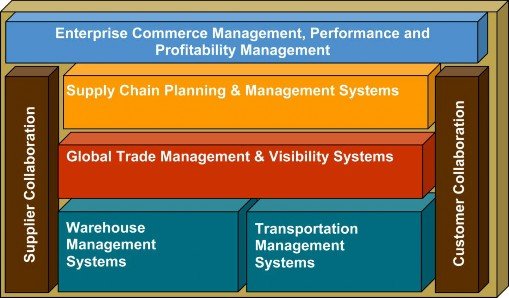
Figure 4. A Supply Chain Technology Platform
In addition to these standard technology platforms, today’s expansion of sales channels to multi- channels – retail, wholesale, B2B, B2C, online ordering and fulfillment, and others – has underscored the absolute need for “Distributed Order Management” (DOM) software. The DOM helps distribute orders to the best stock location and fulfillment base. This new Technology requirement is driving most all companies to a re-assessment of their IT Platforms, and Road Maps.
Software as a Service-based (SaaS) applications, as well as Cloud-based applications, is catching on quickly. Demands for higher productivity create opportunities for SaaS and Cloud application technologies to drive the value creation framework.
SaaS and/or Cloud-based applications present fewer barriers to deployment than traditional license-based software applications. The advantages of SaaS include little to no upfront investment, very limited in-house IT support to integrate or provide ongoing overhead related to application support-maintenance, and quick payback compared to traditional installed-licensed software models.
Technology executives and managers in supply chains must identify the appropriate short-term tactical strategies to meet immediate business needs and remain competitive in the market. At the same time, they must be prepared to adopt and embrace emerging technologies, such as SaaS deployment models before they become outmaneuvered by their competitors.

5.0 Conclusion
For any company, understanding the framework for supply chain value creation is essential, as is defining the characteristics of true end-to-end supply chains. This paper outlines a process-driven view of how to create value through profitable growth, margin improvement, and capital efficiency. Executive choices that determine the contributions to long-term value, and the key value drivers that determine its levels, are also presented.
The issue of how supply chains can improve (or damage) value is complex. There are many factors that go into designing, planning, executing, measuring and modifying supply chains. Each Mega Process is complicated. However, when assessed and integrated within the end-to- end supply chains (supported by speed and productivity and enabled by technologies), it becomes a “journey” to get to the ultimate solution.
The framework and concepts presented here will stimulate interest in learning more about leveraging supply chains to achieve higher long-term business value. With these value creation opportunities in mind, businesses can generate more opportunities for both top-line and bottom- line growth. Furthermore, if the opportunities are linked to profitable growth, margin improvement, or capital efficiency, then they can be measured and valued.
Operational excellence is about much more than operating at lowest cost. The key to unlocking the full potential of operational excellence is to design, plan, and execute supply chains that create long-term value in all three areas – profitable growth, margin improvement, and capital efficiency. And, then, measure performance on a balanced scorecard that shows financial and operating performance results. This leverages a company’s supply chain for success and results in true and sustainable value creation.
Creating long-term value for your company is the right executive goal. We can learn much from Jeff Bezos, the CEO of Amazon, whose company is a true model for value creation. There are four key things that Amazon does to become a value-creation machine:
-
Focus on long-term investments and innovations that bring real value.
-
Allow mistakes to be made, and learn from these mistakes.
-
Have the persistence to keep working.
-
Focus on the customer.
Supply chains are the foundation and the building blocks used to put these principles to work, and the ROI from supply chain investments within companies outweighs any others in the quest to create long-term value.
Contact Information
Tompkins International
info@tompkinsinc.com
About Tompkins International
Tompkins International transforms supply chains to create value for all organizations. For more than 35 years, Tompkins has provided end-to-end solutions on a global scale, helping clients align business and supply chain strategies through operations planning, design and implementation. The company delivers leading-edge business and supply chain solutions by optimizing the Mega Processes of PLAN-BUY-MAKE- MOVE-STORE-SELL. Tompkins supports clients in achieving profitable growth in all areas of global supply chain and market growth strategy, organization, operations, process improvement, technology implementation, material handling integration, and benchmarking and best practices. Headquartered in Raleigh, NC, USA, Tompkins has offices throughout North America and in Europe and Asia. www.tompkinsinc.com.


